Build a yacht, a phrase that conjures images of sun-drenched decks, the gentle lapping of waves, and the freedom of the open sea. But beyond the glamour lies a complex, fascinating process, a journey from initial sketches to the grand unveiling. This isn’t just about assembling a vessel; it’s about crafting a floating masterpiece, a testament to engineering, design, and a deep love for the ocean.
We’ll navigate the intricacies of yacht design, exploring hull types, materials, and propulsion systems. We’ll delve into the art of interior design, uncovering the secrets of creating luxurious living spaces afloat. From understanding regulations to managing budgets and timelines, we’ll chart a course through every stage of this ambitious endeavor, equipping you with the knowledge to understand the process of building a yacht.
Building Your Dream Yacht: A Comprehensive Guide

Embarking on the journey of building a yacht is a thrilling prospect, a fusion of artistry, engineering, and a touch of daring. It’s a significant undertaking, demanding meticulous planning, expert craftsmanship, and a dash of patience. This guide will walk you through the key stages, offering insights and practical advice to help you navigate the exciting world of yacht construction.
Prepare to set sail on an adventure of a lifetime, where your vision takes shape, transforming into a floating masterpiece.
Yacht Design and Planning, Build a yacht

The genesis of any custom yacht lies in its design and the comprehensive planning that precedes construction. This stage sets the foundation for the entire project, dictating the vessel’s performance, aesthetics, and overall functionality. Careful consideration of various factors is crucial to ensure the final product aligns with your specific needs and desires.
Initial design considerations for a custom yacht involve several critical aspects:
- Hull Type: The hull’s shape profoundly influences the yacht’s performance. Options include displacement hulls (for fuel efficiency and comfortable cruising), planing hulls (for speed), and semi-displacement hulls (a balance of both). The choice depends on your intended use and cruising style. For instance, if you plan to travel long distances, a displacement hull might be ideal.
- Size: Yacht size impacts everything from cost and crew requirements to marina availability and operational expenses. Determine the appropriate length based on your budget, desired amenities, and intended cruising grounds. A larger yacht offers more space and comfort but comes with increased costs.
- Intended Use: Define how you’ll primarily use the yacht. Is it for family vacations, entertaining guests, competitive racing, or long-range cruising? Your intended use dictates the design features, such as the layout, amenities, and propulsion system. A yacht designed for racing will differ greatly from one intended for leisurely family cruises.
Yacht designs come in various forms, each with unique advantages and disadvantages. Here’s a comparison:
| Yacht Type | Description | Advantages | Disadvantages |
|---|---|---|---|
| Motor Yacht | Powered by engines, prioritizing speed and comfort. | Fast cruising speeds, spacious interiors, ease of handling. | Higher fuel consumption, potential for mechanical issues, less environmentally friendly. |
| Sailing Yacht | Powered by sails, offering a more traditional sailing experience. | Fuel efficiency, connection with nature, potential for thrilling sailing. | Requires skilled crew, weather-dependent, less interior space. |
| Catamaran | Multihull design, offering stability and spaciousness. | High stability, ample living space, fuel efficiency. | Can be more challenging to maneuver in tight spaces, potential for higher dockage fees. |
| Superyacht | Large, luxurious motor or sailing yachts, often with extensive amenities. | Unparalleled luxury, vast space, advanced technology. | Extremely high cost, significant crew requirements, complex regulations. |
Selecting a naval architect and interior designer is a pivotal decision. Your naval architect will translate your vision into a functional and seaworthy vessel, while the interior designer will create a luxurious and comfortable living space. Experience and a strong portfolio are crucial factors to consider.
- Naval Architect: Look for experience in designing yachts of a similar size and type to your vision. Review their portfolio to assess their design style and technical expertise. Ensure they have a proven track record of successful projects and a good understanding of relevant regulations.
- Interior Designer: The interior designer should have experience in yacht interiors and understand the unique challenges of designing for a marine environment. Review their portfolio to assess their aesthetic style and their ability to create functional and aesthetically pleasing spaces. They should be adept at space planning, material selection, and integrating various systems.
Last Word: Build A Yacht

Embarking on the adventure to build a yacht is undoubtedly a challenging endeavor, but the reward—a vessel tailored to your every desire—is immeasurable. This guide provides a foundational understanding of the essential elements involved, from initial design to the final commissioning. So, weigh anchor, prepare your course, and set sail toward the realization of your maritime aspirations. The sea awaits, and your dream yacht is within reach.
Commonly Asked Questions
How long does it typically take to build a yacht?
The timeline varies greatly depending on the size and complexity, but expect anywhere from 18 months to several years for a custom build. Production boats can be quicker, sometimes taking less than a year.
What’s the biggest cost factor when building a yacht?
Materials and labor are typically the largest expenses. High-quality materials and skilled craftsmanship are crucial, but also represent a significant investment.
Can I build a yacht myself, or do I need professionals?
While experienced boat builders might undertake some projects, building a yacht is generally a team effort. You’ll need naval architects, designers, engineers, and skilled tradespeople.
What are the ongoing costs associated with owning a yacht?
Expect to budget for maintenance, dockage, insurance, crew (if applicable), fuel, and potential repairs. These costs can vary widely depending on the yacht’s size and usage.



